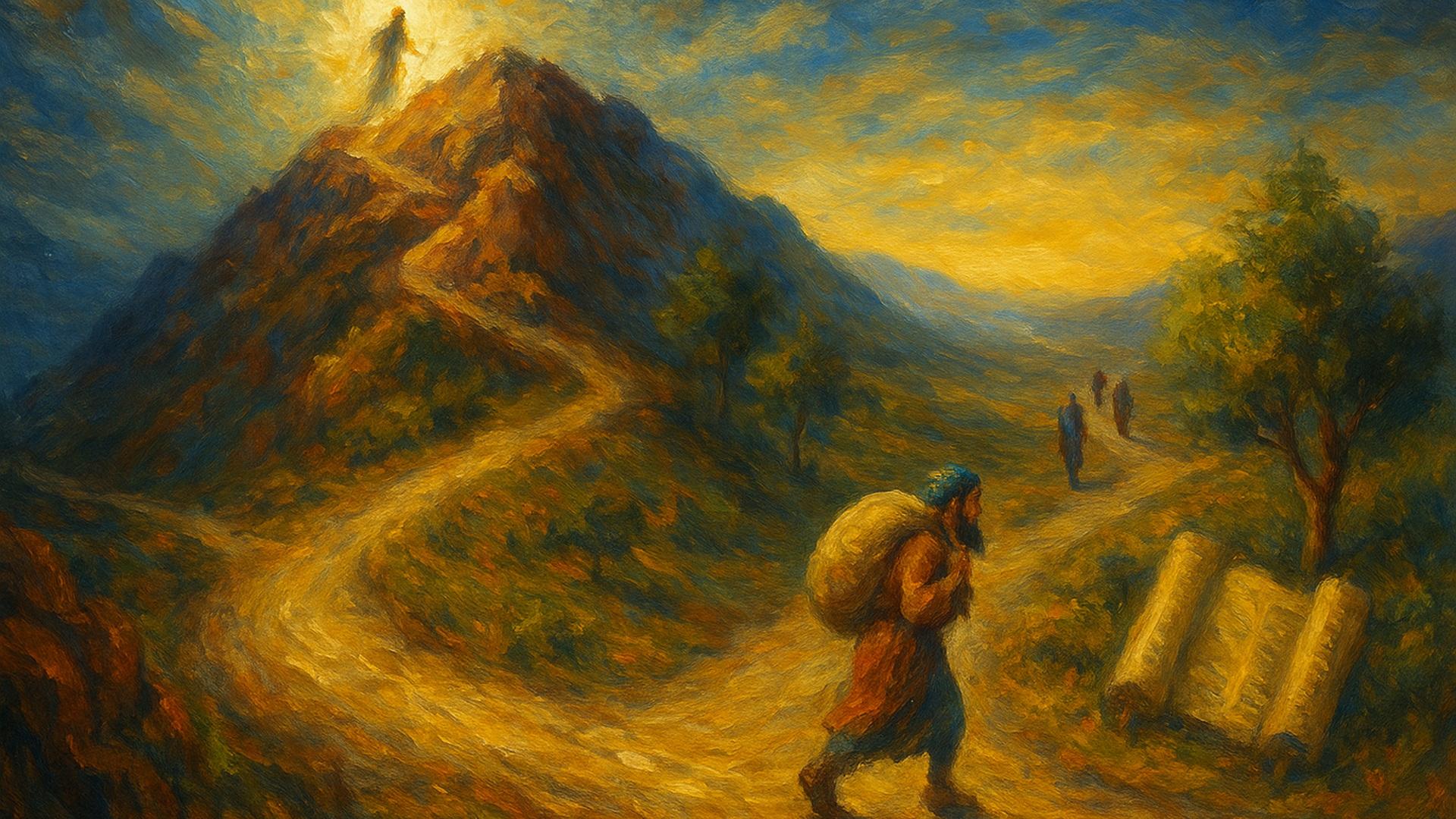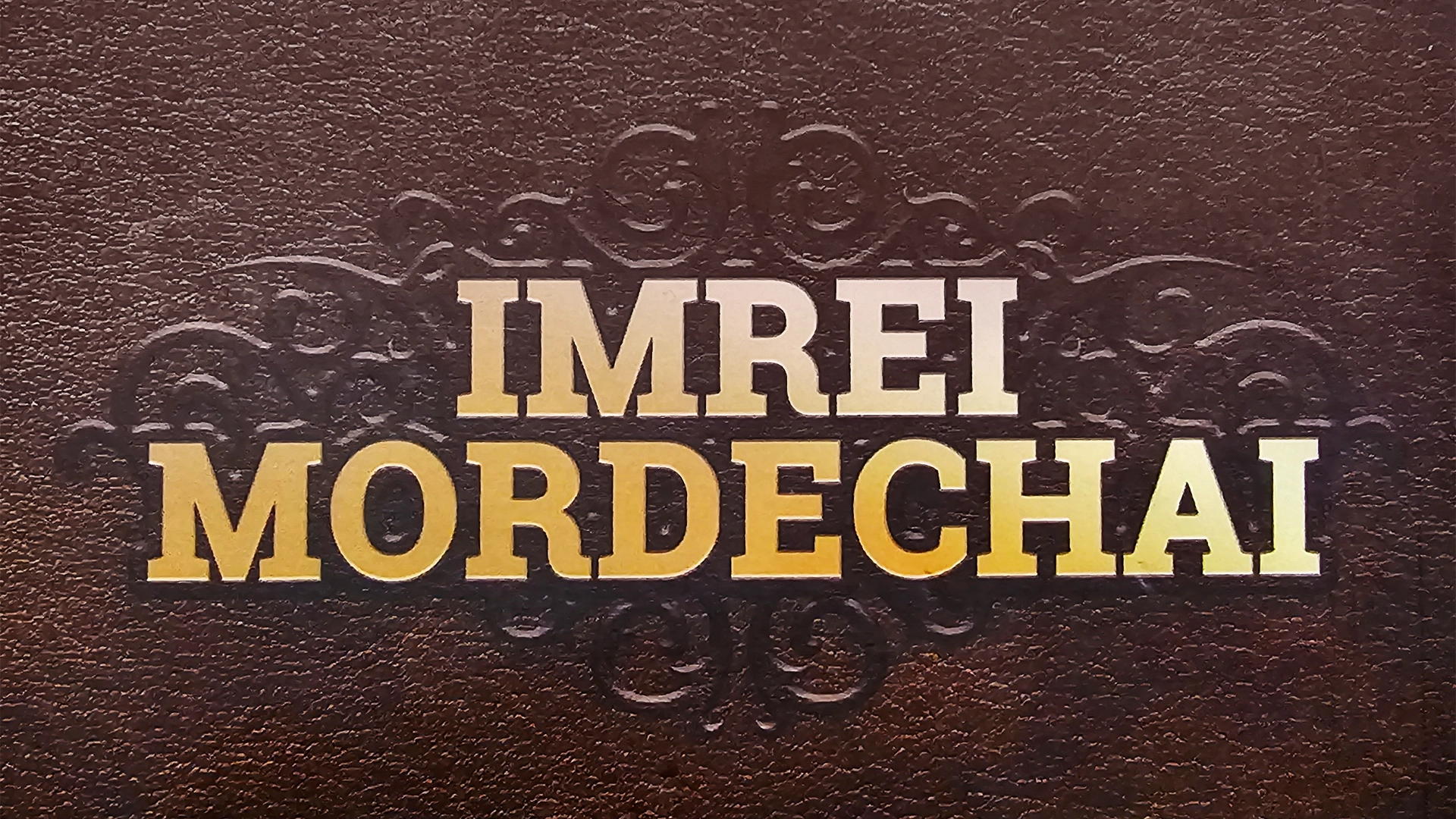June 5th, 2025 / 9th of Sivan 5785

Which is easier to work with: volatile materials like uranium, or materials of more stable molecular structure? ask any scientist and he’ll tell you that the latter is easier. let me apply this example to two fundamental ways in which we can understand the human being, who is created by G-d out of a body and a soul.
according to Beis Shammai [House of Shammai], the soul is essentially outside of the body. it is such a lofty spiritual entity that it can only with difficulty be connected to the body, except perhaps for our hearts. this connection of body and soul is volatile.
according to Beis Hillel [House of Hillel], body and soul are joined in a solid and stable connection. they may not see eye to eye, but they get along. when we think of taking care of our physical needs, we call it “keeping body and soul together.” when we think of spiritual growth, our work is cut out for us: Mussar [ethical self-discipline], Torah [Jewish learning] and kedushas hamitzvos [holiness of commandments] come together to address our bad middos [character traits] like taava [lust], gaava [pride] and kaas [anger]. it’s a difficult task, but it’s easier to get a handle on it. one can master body and soul by following the approach of Beis Hillel.
through mastering the olam hakatan [microcosm], meaning ourselves, we can be involved with the olam hagadol [macrocosm]. it might seem easier at first glance to focus on the high spiritual realms by ignoring our bodies and concentrating on the soul, but you should know that you are then dealing with a volatile and dangerous material.
These two worldviews are the thinking of very great men. every Tanna [sage of the Mishnah] had the ability to revive the dead. Rabbi Eliezer was able to call down open and outright miracles by touching the upper worlds. in the machlokess [dispute] over the achnayi oven, whether it has a status of tumah [spiritual impurity] even though it can be dismantled, the question was: is it a kli [vessel] or not? Rabbi Eliezer said that it is spiritually pure and he added, if I am right then let the carob tree be uprooted (and it was) and further, if I am right then let the walls of the beis midrash [study hall] fall (they started to lean). Rabbi Yehoshua asked for mercy so that the walls would not fall, but they did not become upright either.
the achnayi oven is made out of flat clay tiles held together with mud. that is, it is only a kli because for the moment it is loosely held together. Beis Hillel and Beis Shammai viewed the achnayi oven as a representation of the human being. the smooth tiles are like his soul – they by definition cannot become tamei [ritually impure]. but when they are held together with a little mud, which is like the body, Beis Hillel says even though it is a little broken apart, so long as it is one piece, it is still alive and can have a status of tumah. Beis Shammai says no. the soul can rise above the physical world totally and reach a state of having no tumah, even when the human being is still alive. in the Machzor [High Holiday prayer book] we say, a man is like a broken shard of a clay vessel – that is, he can only finally reach a state of having no tumah when the body has returned to dust. the name of the achnayi oven is also a reference to the primordial snake whose zohama [spiritual filth] entered Man at the time of his sin in gan eden [Garden of Eden] – achnayi means a snake. thus, Rabbi Eliezer, who was from the School of Beis Shammai, ruled that this oven is spiritually pure – that is, in his lifetime a person can totally nullify his body and the effects of the zohama. the Rabbanan [Sages], however, ruled that it is tamei as long as a person is alive, the zohama of the nachash [snake] is there and he must deal with his body and soul in that state. Beis Hillel’s position is to handle the body and soul as a unit – work with what we have and strive for spiritual growth. Beis Shammai’s position is to handle the soul as if it is almost out of the body. (Look into the Malbim in Parshas Chukkas.)
The idea is to keep the body alive and healthy, and reach the synthesis of the two worlds, of “a ladder that stands on the ground and its top reaches to the heavens”; living with one’s feet firmly on ground and his head operating on a level that includes the heavenly sefiros [divine emanations].
while this method of Beis Hillel is a hard job, the alternative is even harder: removing the body entirely and becoming totally spiritual – few have succeeded in this. first of all, this method stems from a different viewpoint, and means not using the world in the way it was created to be used. our view is that man was created as a man, not as an angel. we want him to be as he was created, master of himself, and with the proper relationship of soul and body.
some people look for other ways to bring a sense of elevation to the soul, such as through the koach hatuma [power of impurity], kabala [mysticism], drugs, etc. they may think that they are going in the ways of Beis Shammai but they are mistaken. Beis Shammai followed the peshat [plain meaning] level of the Holy Torah as they understood it, practicing fasting and affliction in teshuva [repentance], and giving up their physical needs.
four of the great Tanna’im went into the spiritual realm known as “pardes [orchard].” it was only Rabbi Akiva who, after reaching a certain point, announced: “i will not go further than here.” Rabbi Akiva did so and succeeded, whereas the rest did not and they failed. even though they were great among the sages of the Mishna [oral tradition], and even the smallest of these sages could revive the dead.
so then what do these people expect from their quick high? does the koach hatuma kabala have anything to do with the “pardes” of those great spiritual giants? do they want a quick whiff or puff of olam hazeh [this world] and olam haba [the world to come] all at once? at what price? if not done properly, it creates tumah, sitra achara [the other side], the impure properties get connected to body, and removal is only possible through the para aduma [red heifer] or death. or, maybe chessed [kindness] and emess [truth] through Torah study can cleanse this tumah, but what type of Torah study? this job needs Torah that means killing yourself over a sugya [Talmudic topic] in order to remove the sin. it can be done, but who has really done it?
therefore, the position of Beis Shammai is not practical and not for us. few people in all time have done it. much easier is the way of Beis Hillel. it is a viable derech [path] with a proven track record, but it demands hard work in chachmas haTorah [wisdom of the Torah] and mussar. learning Torah is not just some ideas you got to on your own because you read it in some English books, while remaining with the body and the pleasures of the material world, and the selfish love of oneself – that is definitely not the way either, it’s a kilkul [corruption].
the ways of Jewish belief are a chok [decree], we do it and we know when to stop – up to here and no further. it is not entertainment, a good show about how many times the name of Hashem [G-d] appears in so many verses, or putting the Hebrew letters on a rubix cube to prove something. to follow the way of Beis Hillel, your Torah must be strong, coming from the heart, then Torah sells itself. what do we have to offer? take what you know well, get a Bircas Shmuel [a sefer], get into the text, see the beauty, know what you know well and then teach it with excitement. the power of Torah itself gets everybody and it does not need any tricks. Torah is straight and it makes the heart happy. It is real.
the rule has to be, what we do well is what we should do, and it should be Torah. with Beis Hillel and Beis Shammai, it is the same thing. take the soul and the body together in a proper way that wins. most people fail in the way of Beis Shammai so why do you want that? go for the small things, and be a successful person. first, control yourself, take care of your wife and children as you should, be kind and nice. to make a long story short, when you do maasei mitzvos [mitzvah deeds] it brings kedushah [holiness] and puts the soul and the body together in kedushah, and aveiros [sins] bring tumah. you have to get the proper balance – we know that we have to get rid of kina [jealousy], taava and kavod [honor] and get anivus [humility] and middos tovos [good character traits], yiras Hashem [fear of G-d] and bitachon [trust in G-d]. even in the system of Beis Hillel it is hard to win.
part of Beis Hillel’s approach says that after the sin, we can take those very sins and turn them into zechuyos [merits], meaning we can elevate ourselves to an even higher position than we were before the sin. that is the goal of teshuva. by contrast, Beis Shammai’s goal of teshuva is to become as we were before the sin, that is, remove the sin as if it never existed. the idea of tikun hachet [rectification of sin] is very important, imagine that all Klal Yisrael [Jewish people] gives up the shofar on Rosh Hashana [New Year] because one Jew might possibly carry on Shabbos [Sabbath]. why not just make public announcements? but no, we worry about that sin. still, in reality, tikun hachet is not everything – simply to regain your pristine position of before the sin will not bring you to reach greater heights. to reach higher, do what you can do well and win.
Excerpted with permission from Imrei Mordechai, Vol. 2, A Collection of Inspirational Insights from the “Mussar Shmoozes” of HaGaon Rabbi Mordechai Goldstein Ztzvk”l, The Imrei Mordechai Institute, Diaspora Yeshiva Toras Yisrael, Mount Zion, Jerusalem, Kislev 5779.

Share This!
From beginner to advanced, if you’re a Jewish man, 18 to 35 years of age, and you’re ready to give your heart to HaShem, and to get serious about learning Torah, Diaspora Yeshiva has a place for you with us on Mount Zion, Jerusalem.